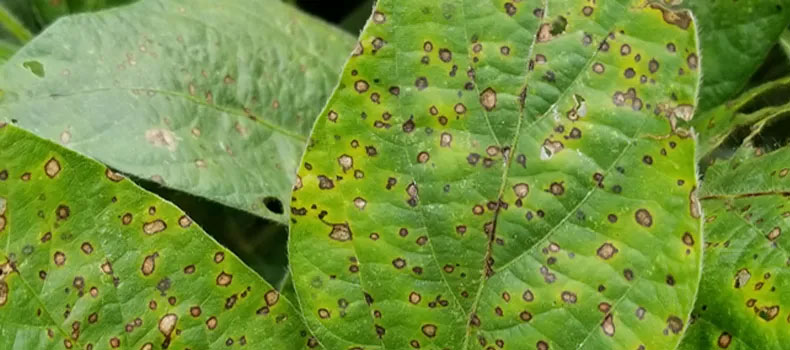

2023-06-02
Frogeye leaf spot is the predominant disease that negatively impacts soybeans, especially susceptible varieties in Indiana. While septoria leaf spot and cercospora leaf blight are issues in some seasons, frogeye is of most concern. If applied by the label, environmental hazards are not a problem. It is environmentally safe to apply a fungicide on soybeans.
If you plan to make one pass with a fungicide, the timing should be at around the R3 to R4 stage. There are several good fungicides available on the market. If you are finding frogeye leaf spot lesions, be sure the fungicide contains an active ingredient that is effective on protecting against that disease.
In the area I consult in southwest Indiana, we add an insecticide to our fungicide. Research we did sweeping several customer fields with a sweep net revealed lots of common soybean insects. While we may not have hit thresholds for each insect, the combination of insects we had and the feeding we were seeing from Japanese beetles, bean leaf beetles and other insects justified the use of an insecticide.
In our experience in southwest Indiana, we have found application of fungicide and insecticide pays. It pays by reducing insect feeding, protecting the soybean from frogeye and other common diseases, and keeping the plant healthy longer into grain fill. Our on-farm research would point to a 5- to 8-bushel yield advantage or more for these applications in most years, and an even larger yield boost in dry years.

The best time to apply fungicide to soybeans is at R3 maturity. The R3 maturity stage is when you see small pods starting to form on the four uppermost nodes. According to the Purdue University Corn & Soybean Field Guide, these pods should be at least one-fourth-inch long. You want to pick a fungicide that has multiple modes of action.
If you see excessive insect feeding, then put in the insecticide. It depends on disease pressure and the yield potential to know if the fungicide will pay.
We have been using foliar fungicides for several years in soybeans and performance has been consistent for most when applied at the R2 to R3 growth stage in beans. I don’t recommend fungicide passes earlier, as those applications have not been consistently providing benefit.
Use of a pyrethrin-based insecticide has been included in most applications and has generated consistent return. The “watch-out” is that the insecticide will control beneficial insects as well. In rare instances, we can flare mites if conditions are dry.
Resistance management is important with all classes of chemistry. Be sure to use a product that contains a good triazole along with the strobilurin base. It is important to not overapply these products — apply only when needed.
